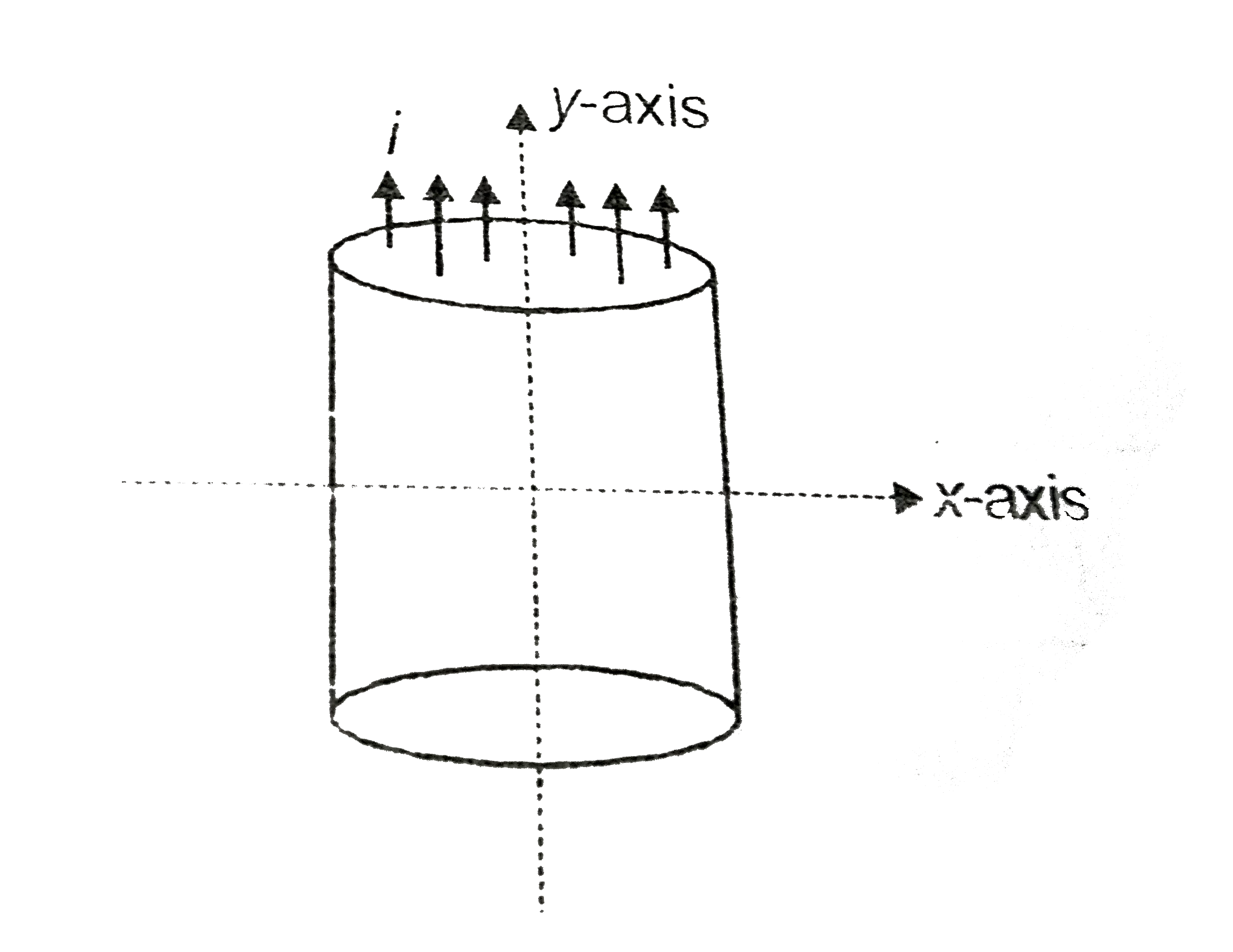The magnetic field in a straight current carrying conductor wire is:
Upward to downward
Downward to upward
All around
In a circular path
The correct Answer is:4
To determine the magnetic field around a straight current-carrying conductor, we can follow these steps:
1. Identify the Direction of Current:
- Consider a straight conductor carrying current I. For this example, let's assume the current is flowing upward.
2. Apply the Right-Hand Thumb Rule:
- The right-hand thumb rule states that if you point your thumb in the direction of the current (upward in this case), your curled fingers will indicate the direction of the magnetic field lines around the conductor.
3. Visualize the Magnetic Field:
- As you curl your fingers around the wire, you will notice that the magnetic field lines form concentric circles around the wire. The direction of the magnetic field will be perpendicular to the direction of the current.
4. Determine the Direction of Magnetic Field at Various Points:
- If you want to find the direction of the magnetic field at different points around the wire:
- Above the wire (where your fingers curl downwards), the magnetic field points into the page (represented by a cross).
- Below the wire (where your fingers curl upwards), the magnetic field points out of the page (represented by a dot).
5. Conclusion:
- The magnetic field around a straight current-carrying conductor is circular and its direction can be determined using the right-hand thumb rule. The field lines are concentric circles centered on the wire.
Final Answer:
The magnetic field in a straight current-carrying conductor wire is in a circular path around the wire, with the direction determined by the right-hand thumb rule.
---
- Consider a straight conductor carrying current I. For this example, let's assume the current is flowing upward.
- The right-hand thumb rule states that if you point your thumb in the direction of the current (upward in this case), your curled fingers will indicate the direction of the magnetic field lines around the conductor.
- As you curl your fingers around the wire, you will notice that the magnetic field lines form concentric circles around the wire. The direction of the magnetic field will be perpendicular to the direction of the current.
- If you want to find the direction of the magnetic field at different points around the wire:
- Above the wire (where your fingers curl downwards), the magnetic field points into the page (represented by a cross).
- Below the wire (where your fingers curl upwards), the magnetic field points out of the page (represented by a dot).
- The magnetic field around a straight current-carrying conductor is circular and its direction can be determined using the right-hand thumb rule. The field lines are concentric circles centered on the wire.
The magnetic field in a straight current-carrying conductor wire is in a circular path around the wire, with the direction determined by the right-hand thumb rule.
Topper's Solved these Questions
- MOVING CHARGES & MAGNETISM BOOK - VMC MODULES ENGLISHCHAPTER - MOVING CHARGES & MAGNETISM EXERCISE - IN-CHAPTER EXERCISE-C
10 Videos
- MOVING CHARGES & MAGNETISM BOOK - VMC MODULES ENGLISHCHAPTER - MOVING CHARGES & MAGNETISM EXERCISE - IN-CHAPTER EXERCISE-D
12 Videos
- MOVING CHARGES & MAGNETISM BOOK - VMC MODULES ENGLISHCHAPTER - MOVING CHARGES & MAGNETISM EXERCISE - IN-CHAPTER EXERCISE-A
10 Videos
- Motion in Two DimensionsBOOK - VMC MODULES ENGLISHCHAPTER - Motion in Two DimensionsEXERCISE - MCQ
2 Videos
- PROPERTIES OF MATTERBOOK - VMC MODULES ENGLISHCHAPTER - PROPERTIES OF MATTEREXERCISE - JEE Advanced (Archive) Level - 2 (MATRIX MATCH TYPE)
1 Video
Similar Questions
Knowledge Check
The magnetic force →F on a current carrying conductor of length I in an external magnetic field →B is given by
AI×→B→lB→l×→BICI(→l×→B)Dl2→l×→B
Draw the pattern of magnetic field lines around a current carrying strainght conductor. How does the strength of the magnetic field produced change.
(i) with the distance from the conductor ?
(ii) with increase in current in a conductor ?
View SolutionThe strength of the magnetic field at a point r near a long straight current carrying wire is B. The field at a distance r2 will be
View SolutionThe strength of the magnetic field at a point r near a long straight current carrying wire is B. The field at a distance r2 will be
View SolutionThe figure shows a long straight current carrying conductor. Can you plot the variation of magnetic field on x-axis ?

View SolutionWith the help of a labelled circuit diagram, illustrate the pattern of field lines of the magnetic field around a current-carrying straight long conducting wire. How is the right hand thumb rule useful to find direction of magnetic field associated with a current-carrying conductor?
View SolutionThe magnetic field midway between two parallel current carrying wires, carrying currents I and 2i in same direction is B. If the current in the wire with current I is switched off, the magnetic field will become
View SolutionThe strength of magnetic field inside a long current-carrying straight solenoid is:
View Solution
